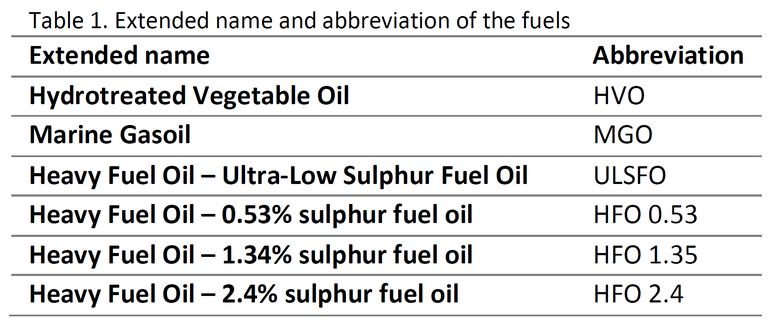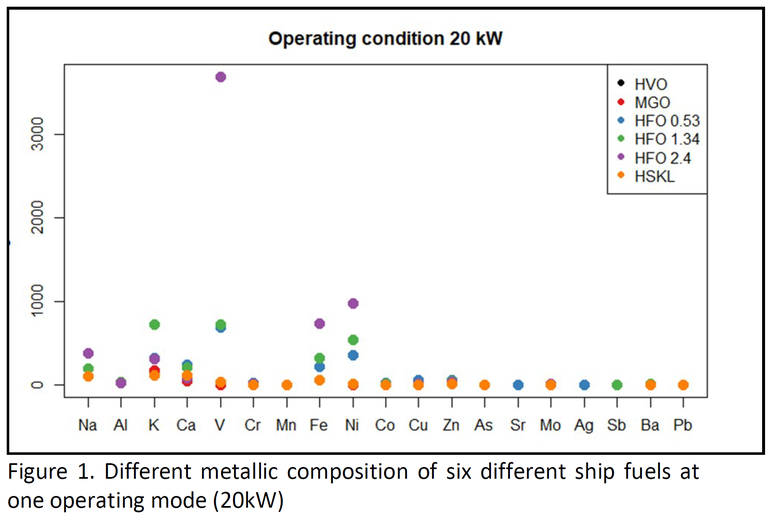Abstract
Emissions from different types of fuel used in maritime transport are recognised as a major source of pollutant emissions (Sippula et al., 2014). The impact of these emissions has not only been found in harbour cities (Becagli et al., 2012), where the level of pollution is increasing, but also on a global scale, having large effects on the climate (Eyring et al., 2010). The pollution resulting from these emissions has major repercussions not only for the environment, but also for human health (Corbett et al., 2007). The study here presented is part of the broader project Optimization of scrubber exhaust- Gas scrubbing technology to reduce environmentally harmful ship emissions (SAARUS). The general aim of SAARUS is to deal with the current regulation of ship emissions and the subsequent optimisation of scrubber systems, which can control and reduce the environmental risk of these emissions.
The first part of this study focused on the comprehensive physical/chemical characterisation of the emissions of a wide range of ship fuels. Six different fuels, Table 1, which belong to both heavy fuels and distillate fuels have been characterised.

Here, the metal fraction has been determined in the emissions of these different ship fuels which were also working under different operating conditions. A wide range of metals have been determined by Inductively Coupled Plasma Mass Spectrometry (ICP-MS). For the determination, a pre-analytical treatment, with a microwave acid digestion with HNO3 and H2O2 was used.
The results obtained show the different metallic composition in the emissions of the six different fuels, highlighting common characteristics for some of them. Figure 1, e.g., shows that HVO, MGO and HSLK fuels generally have a lower metal content than the HFO 0.53, HFO 1.34 and HFO 2.4 fuels. This trend was observed during all the different operating conditions of the ship's engine. Aluminium (Al), Calcium (Ca), Copper (Cu), Iron (Fe), Nickel (Ni), Potassium (K), Sodium (Na), Vanadium (V), and Zinc (Zn) are generally the most characteristic metals of the different fuels.

In addition, it has been noticed that the emissions of fuels working under different operating conditions shows a clear trend of change in the metal composition. These first results are significant in order to focus on an overall well-targeted reduction of emissions.
Becagli, S., Sferlazzo, D. M., Pace, G., Di Sarra, A., Bommarito, C., Calzolai, G., … Udisti, R. (2012). Evidence for heavy fuel oil combustion aerosols from chemical analyses at the island of Lampedusa: A possible large role of ships emissions in the Mediterranean. Atmospheric Chemistry and Physics, 12(7), 3479–3492.
Corbett, J. J., Winebrake, J. J., Green, E. H., Kasibhatla, P., Eyring, V., & Lauer, A. (2007). Mortality from ship emissions: A global assessment. Environmental Science and Technology, 41(24), 8512–8518.
Eyring, V., Isaksen, I. S. A., Berntsen, T., Collins, W. J., Corbett, J. J., Endresen, O., … Stevenson, D. S. (2010). Transport impacts on atmosphere and climate: Shipping. Atmospheric Environment, 44(37), 4735–4771.
Sippula, O., Stengel, B., Sklorz, M., Streibel, T., Rabe, R., Orasche, J., … Zimmermann, R. (2014). Particle emissions from a marine engine: Chemical composition and aromatic emission profiles under various operating conditions. Environmental Science and Technology, 48(19), 11721–11729.